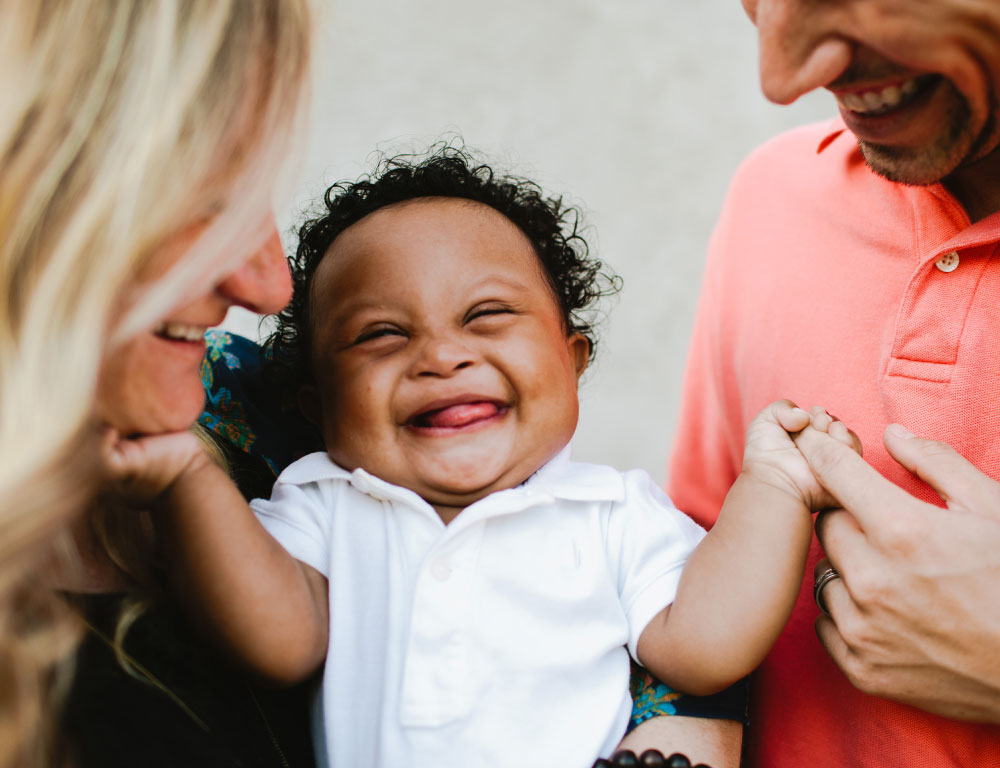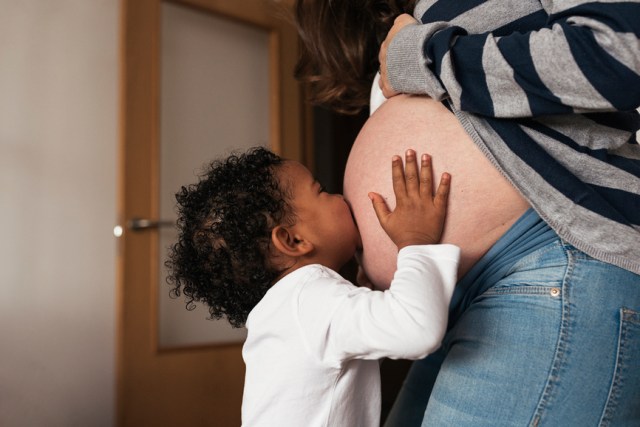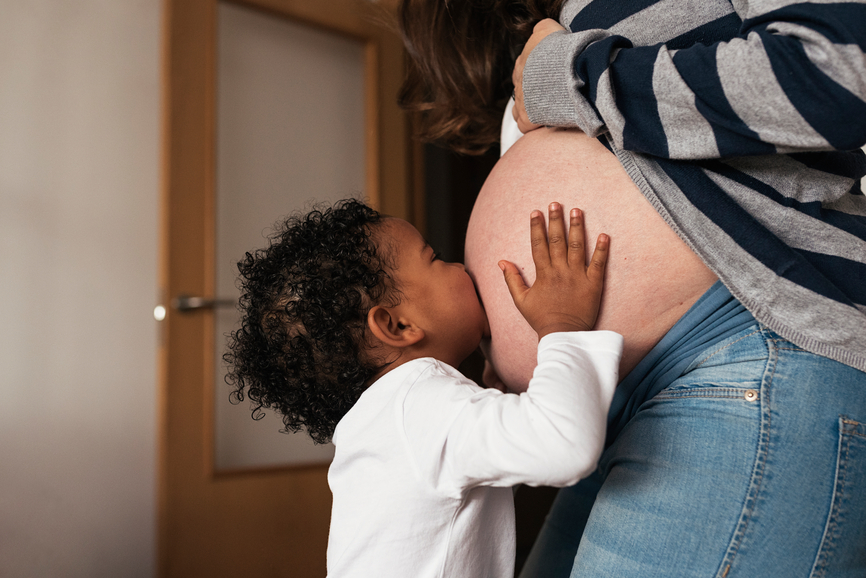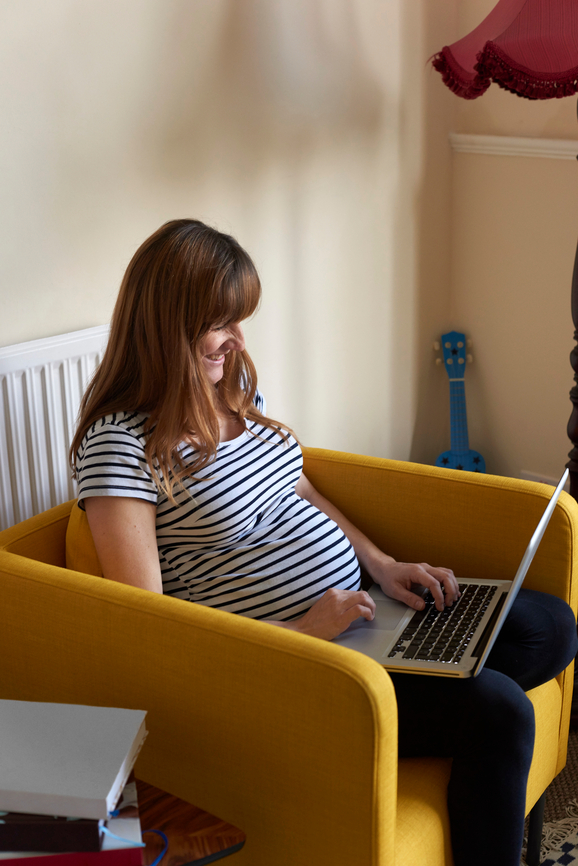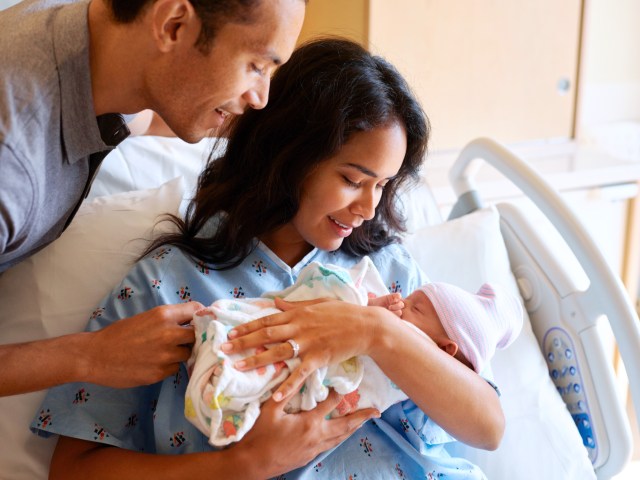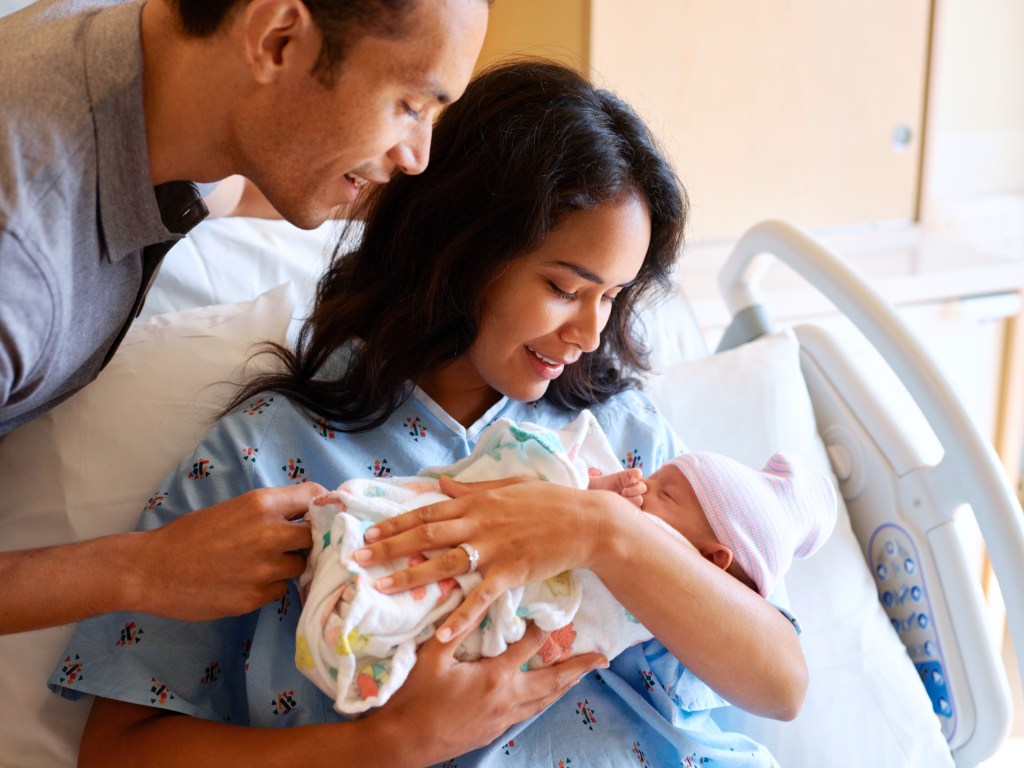On December 31, 2006 I became an Auntie; I was ELATED. Three short months later, in a fashion I would never have imagined in a million years, my family and I would be encircling a bassinet in a cemetery. I had no idea Sudden Infant Death Syndrome (SIDS) was a first-world reality, until it unexpectedly took my sweet nephew one cold day in April.
If you aren’t pregnant and don’t have any kids, you’ve probably never thought about SIDS; I hadn’t. When I heard words like “infant mortality,” I automatically associated such a travesty with remote, rural villages in the furthest outreaches of Africa or Mongolia or Papua New Guinea. Babies don’t die for no reason in America.
This Thursday (April 10), it will have been seven years since Christian passed away. Each year on his birthday, and again on the day of his death, my family struggles to cope with how best to remember his sweet, but far too short life. As I’ve thought about Christian the last few weeks, I realized I desperately wanted to tell his story. I want people to know that SIDS is real, the effects it has on families are devastating, that these babies and their families are more than numbers and statistics. But how could I do justice to this story? It’s not mine to tell. As soul-crushing as the news of Christian’s death was to me, it has affected no one more profoundly than it did my brother.
Even though we haven’t lived together in over a decade, I still consider my brother my best friend. He is the strongest person I have ever met. He has faced and overcame more in his short life than many people have in twice as many years. Not only has he managed to survive such a tragic loss, he has done it with grace, and with his faith in God intact. Here’s his story, in his own words:
By Aaron Robinson
SIDS or (Sudden Infant Death Syndrome) is more common than people realize. It is every parent’s worst nightmare. Picture that one minute you are watching your baby laugh, play, talk gibberish, and the next they are gone from this world forever—all in the blink of an eye. According to data from the Centers for Disease Control and Prevention, 2,063 babies died in 2010 from SIDS. Even though “Back to Sleep” efforts helped to cut the SIDS rate by more than half since 1994, in 2013 SIDS was the leading cause of death among U.S. infants aged 1 month to 1 year, with 2,300 cases occurring annually according to the Washington Post.
What is SIDS? How does one get it? Is it contagious? What preventative measures can I do to have peace of mind for my family? What symptoms do these babies with SIDS have before they pass on?
These are the most common questions people ask when it comes to this topic. Fortunately, there are a few questions that can be explained, but I warn you that this isn’t going to be your typical fairy tale ending.
I myself know firsthand how devastating and real SIDS is.
On April 10th, 2007 my 3 and a half month old son Christian died out of the blue right under my nose. He was a perfectly healthy baby that had a smile that could brighten the darkest room. He was just starting to talk (gibberish of course), he was beginning to crawl and even lift his head up high. His results from his two month checkup after his shots came back great. The doctors said he was a perfectly healthy baby. Knowing his health a month and a half prior to his death made this situation even more frustrating. How could the doctors not know that he had some kind of illness during all of the testing?
Well, Sudden Infant Death Syndrome (SIDS) is also known as “Cot Death” or “Crib Death,” and is the sudden death of an infant that is not predicted by medical history, and remains unexplained after a thorough forensic autopsy and detailed death scene investigation. There was absolutely no way the doctors could have known that Christian had this condition. He was a healthy baby with NO symptoms of any illness whatsoever.
I remember the day he died like a horror movie that has embedded itself into my mind. Christian woke up early around 7:30am. My wife at the time had already left for work, so I had to care for him before I had to go back to another night shift. I fed him and held him on our couch in the living room. I would talk and laugh with him until he got sleepy. I set him down in his rocker for a bit around 10:30am/11ish. He was pretty fussy and couldn’t seem to fall asleep completely, so I took him upstairs for a bath to calm him down. After his bath I fed him again and sat with him on the couch. After a few hours of holding him, he fell asleep in my arms. I slowly took him up to his room and laid him down in his crib (on his back). I cleaned up the kitchen and got ready for my shift, which took me less than an hour to do. I noticed I hadn’t heard any noises coming from Christian’s room; usually I could hear him rolling around or even making some kind of noise. I went upstairs to check on him, and when I walked in I noticed that he was face down in the middle of his crib. At first glance I didn’t think too much of it, since he rolled himself over all the time.
But when I touched him, he was stiff as a board, and a chill like I have never felt before jolted through my entire body. When I turned him over his face was purple and blue.
I will never get that horrifying image out of my head. I have never even seen a dead body before, and the first one I saw was my own son. I screamed and panicked like never before. I immediately called my wife, frantic. All I could say was his name over and over.
She immediately was distressed saying, “What’s wrong with Christian!?” I couldn’t get any of the words out since they were all replaced by my cries and screams. I finally got the words out and said “He’s gone…..Christians Dead!”
I called 911 immediately after I called my wife. I began pacing back and forth in the room saying his name over and over. I tried to be clear with the operator, but words can’t even describe the emotions I was feeling at that moment. The ambulance arrived on scene within two minutes of my call. We were originally told that the paramedics revived our son, but we later found out that he was DOA. My wife and I were then both questioned separately by two Office of Special Investigations (OSI) officers.
Long story short, they were playing the “good cop, bad cop” routine with me for a bit, which I could not deal with considering my son dropped dead for no apparent reason. After hours in the hospital, we had to go back to our house to gather some belongings. When we arrived, it looked like a crime scene from a television show. There was yellow tape around our entire house with people walking in and out of it with kits and clipboards in hand. I couldn’t believe that all of this was happening. I just thought to myself “I know bad things have happened to other people, but why me!? Why us?”
The hardest part that followed Christians passing, was not knowing the cause of death for six months. For six long months, I blamed myself. I played the events that happened that day in my head over and over again to the point where I’d drive myself to near insanity. I kept saying “If I would have just kept him in my arms, or left him in his rocker, or just didn’t let him out of my sight he’d still be alive….”
My wife and I had two completely different ways of coping with our loss, which made things that much harder to cope. I am a very affectionate, outgoing, and social person. I wanted to talk about the situation and release all of my pain and suffering. Whereas she shut down, and was in denial about what had happened. She bottled her emotions and kept them in. Even mentioning his name was forbidden in our house. All I wanted was to be able to vent to my wife about everything, but I had to resort to talking with family, friends, and even complete strangers. Don’t get me wrong, it was nice having them there for me, but they couldn’t understand what I was truly going through. I had even gotten to the point of wanting to commit suicide.
My lowest point was sitting alone in our computer room with a butcher’s knife in hand. I kept asking God why he would bring a child into this world and take it away so soon. I felt like God hated and punished me for not being a good person. With the knife against my left wrist, I began to press. Tears were flooding down my face while I kept telling Christian how sorry I was that I had failed him.
Just before I planned driving the knife into my wrist and dragging it down my arm, I heard a voice yell out “NO!” I know it sounds crazy, but I am not making this up. I dropped the knife and knew this was not the way to go about the situation no matter how bad I was hurting. All this would do was cause even more pain and suffering for others who cared for me.
After what felt like an eternity of waiting for some kind of news, the funeral home called and told us they had received the death certificate. The woman on the phone kept apologizing and said “They have done every test known to man, and they could not find anything at all, so they determined that he died of SIDS.” I had no idea what she was talking about, but she went into more detail about it when we arrived at the funeral home. I felt like a ton of weight was removed off of my shoulders. I finally got closure, and part of me could finally snap out of the slump of blaming myself for his death. It was simply out of my control. It didn’t change the fact that he was gone, but at least I didn’t have to keep blaming myself for it anymore. We donated thousands of dollars to the CJ Foundation for SIDS research and bought bracelets to give to people for SIDS awareness. My wife and I also bought SIDS T-Shirts to help promote awareness.
We learned that a combination of physical and sleep environmental factors make an infant more vulnerable to SIDS. Some physical factors include:
Brain abnormalities-The portion of the infant’s brain that controls breathing and arousal from sleep isn’t working properly.
Low birth weight –Premature infants are at risk of not having a fully matured brain, which means they have less control of their breathing and heart rate.
Respiratory infections-In some cases (not in my case) many infants had a cold, which caused the infant to have breathing problems.
Some Sleep environmental factors include:
Sleeping on stomach or side-Placing infants in this manner may cause them to have more difficulty breathing than if they were placed on their backs.
Sleeping on a soft surface-This can block the infant’s airway; always avoid placing the infant face down, on a water bed or even a fluffy comforter.
Sleeping with parents-The risk increases when an infant sleeps in the same bed with parents due to the increased amount of soft surfaces to impair breathing; however, the risk of SIDS is lowered if the infant is sleeping in the same room as the parents.
SIDS is more commonly found in males, age 2-3months old (90% are under 6 months old). African Americans, American Indians, and Eskimo infants are found to be at higher risk, but SIDS occurs in all races and both genders. It has also been found that babies who have had siblings or cousins that have died of SIDS are at higher risk of being susceptible to it as well (not in my case. There has been no one in my immediate family that has died of SIDS except my son).
Maternal risk factors Include:
Young mother under 20 years Smokes cigarettes Drug or alcohol use Inadequate prenatal care
Currently, there is no known way to completely prevent SIDS, but only preventative measures to reduce the risk. The best things to do are to always put your infant on his/her back. Don’t sleep with your infant in the same bed. I also recommend purchasing the Snuza Breathing Monitor (Courtesy of raddestmom.com). The monitor works by a small clip that goes right on the baby’s diaper and vibrates if the monitor detects shallow/slow/no breathing for 15 seconds. If the monitor has to vibrate to wake the infant, the monitor will flash a red light to notify you. If it happens three times, the alarm will go off to further notify you until you turn it off. Until there is a guaranteed answer to what really causes SIDS, I will always be skeptical.
I’ve seen so many cases that were very similar to mine, where our kids were completely healthy and we did everything right, but they still died. I have come to terms with and firmly believe that it was his time to be with God. He is in a better place now, and I will be reunited with him one day.
I'm a native of Michigan, a vagabond of the western U.S., and now an expat in Shanghai, China. I mom (yeah...that's a verb), I IRONMAN, I travel, and I'm attempting to master Mandarin. Expat life with two kidlets is crazy, and I wouldn't trade it for the world.
Massage therapy involves the manipulation of muscles and other soft tissues of the body to relieve pain and heal injuries. Both pre-natal and postpartum massage help to relieve muscle soreness, manage stress and anxiety, and improve sleep quality. At Moon Rabbit, we encourage both moms-to-be and new moms to schedule pre- and postnatal massages; not only do they feel great, but they are also good for you and your baby’s health. Here are a few benefits to both pre and postnatal massage therapy.






